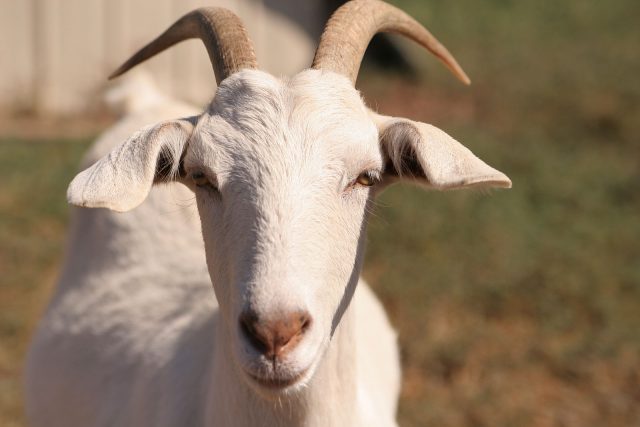Type the name of the breed you're looking for below
[wpdreams_ajaxsearchlite] Don't see the breed your're looking for? Click here and let us know!
Don Goat
| Place of Origin | Russia, Volga region |
| Origin | The Don goat breed from the Don River of the Lower Volga territory in Russia is used for the production of wool, goatskin, and milk. It produces the highest average wool per individual goat sheared of any goat breed and produces milk with a relatively high fat content. The Don breed was discovered in 1933-34 by an expedition of the All-Union Institute of Sheep and Goat Husbandry studying goats in the former Lower Volga territory. Because of its location, these goats were named "Don"; their habitat covers the basin of the Don river and its tributaries. |
| Purpose | Milk, fiber |
| Characteristics | The Don goats are of medium size; they have strong constitution, good conformation and adequate undercoat wool on the body, neck and belly. Males are larger than females and have a greater live weight. The average live weight of 3.5-4.5 year-old males is 70 kg (155 lb). The body shape is roundish and the skeleton is bigger than in females. Horns are large and variable in shape. Males back is long, straight and wider than in females. The average live weight of adult females is 36 kg (80 lb). Kids weigh 2 kg (4.5 lb) at birth, 14 kg (31 lb) at weaning, 27 kg (60 lb )at the age of 1.5 years and 30 kg (66 lb) at 2.5 years. Don goats are predominantly black, but they are sometimes white. Adult females have the following measurements : height at withers 60.3 cm (24 in), height at sacrum 62.1 cm (25 in), oblique body length 64.5 cm (26 in), chest girth behind shoulder blades 81.7 cm (32 in), chest depth 30.7 (12 in), chest width between shoulder joints 15.9 (6 in)and width at hips 19.5 (8 in). |
| Other Considerations | Don goats have the highest wool production among all goat breeds, though with significant individual deviations. The average wool yield from females is 500 g (range 330-1430 g); from bucks it is 1015 g (range 550-1600 g). The average wool content in the fleece is 79.4% (range 61.5-92.2%). As is known, in all other cashmere breeds and related varieties the guard hairs are much longer than the wool fibres. In this respect Don goats is that, compared with other breeds and varieties, the wool is coarser and not uniform in fineness. The average fineness of wool fibres, both fine and coarse together, is 22 µm. Don goats are quite satisfactory milkers. The average yield in a 5-month lactation period is 130-140 litres. The milk is noted for high fat content - an average of 4.6% (range 3.3-8.2%). In the first two days after kidding the fat content is 7-12%. Don goats are very prolific. An average kidding rate is 145-150 kids per 100 females. The goatskin is mainly used for low-grade footwear. The pelt of Don goats slaughtered in autumn has good fur quality determined by the structure of the fleece (its density and wool fibers longer than guard hairs). They can be used as a basic material in the fur industry. In their fur quality Don goats are comparable with Ramanov sheep which produce the best sheepskin. The major enterprise for Don goat breeding is the collective farm Svetly Put situated in Oktyabr district of Volgograd region. On 1st January 1984, this farm had 6500 goats which were characterized by a high classification, uniformity of production type and wool quality. Wool yield from males is 1160 g, maximum 1600 g; from females 560-630 g, maximum 1500 g. In 1982 the average yield per head was 639 g. The bulk of the herd are goats with dark grey wool. Fertility is high: up to 140-150 kids per 100 females. In 1982, the average was 114 kids born for each 100 females; 103 of them survived weaning. In the same year the farm produced 5,000 kg of high quality cashmere. |



